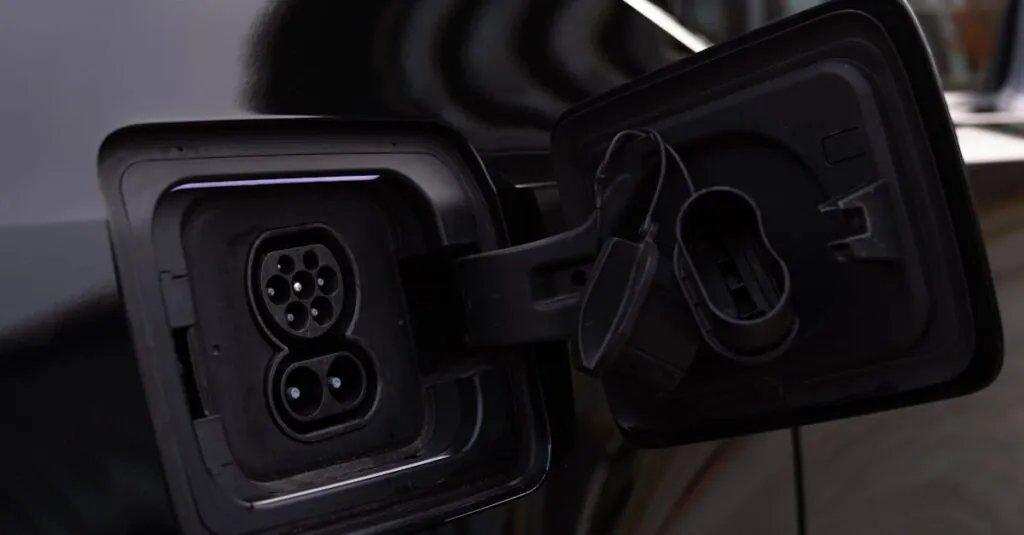Table of Contents
ToggleImagine a city where electric vehicles glide silently through the streets, powered by a grid so smart it could outwit a chess champion. Welcome to the future of urban living, where the smart city EV grid transforms the way we think about transportation and energy. This isn’t just a dream; it’s happening right now, and it’s about to revolutionize the way we navigate our bustling metropolises.
Overview of Smart City EV Grid
Smart city EV grids integrate electric vehicles with an intelligent energy management system. These grids optimize energy use by coordinating charging and discharging cycles among numerous electric vehicles. Cities implementing this technology enjoy reduced emissions and improved air quality, thanks to efficient energy distribution.
Advanced infrastructures support smart city EV grids, utilizing real-time data to adjust to demand. Sensors monitor vehicle usage and energy consumption, enabling better responses to peak periods. Battery storage systems play a crucial role, harnessing renewable energy sources and providing backup power when needed.
Sustainability remains a core benefit of smart city EV grids. Urban areas can reduce reliance on fossil fuels by employing electric vehicles powered by clean energy. Further integration with public transportation enhances overall mobility, encouraging more citizens to make eco-friendly choices.
Electric vehicle owners benefit from smart grids through improved charging options. Access to public charging stations is streamlined, ensuring that vehicles charge during off-peak hours. Incentives for using renewable energy contribute to lower electricity costs, enhancing affordability and accessibility.
Collaborative efforts among city planners, utility companies, and technology providers drive innovation in this field. These partnerships facilitate the development of policies aimed at supporting electric vehicle adoption. Urban mobility programs effectively showcase the benefits of smart city EV grids, drawing public interest and fostering community engagement.
As smart city initiatives expand, the potential for a comprehensive EV network grows. Data-driven strategies enable cities to predict energy needs more accurately. Optimizing resources helps create dynamic urban environments that prioritize sustainability and enhance everyday life for residents.
Key Components of Smart City EV Grid
Smart city EV grids depend on several essential components to operate efficiently. These elements create a seamless integration of electric vehicles within the urban energy ecosystem.
Electric Vehicle Infrastructure
Access to robust electric vehicle infrastructure is crucial. Charging stations must be readily available throughout the city to support EV adoption. Cities require fast-charging options to minimize downtime for users. Location of charging stations influences convenience for drivers, making high-traffic areas ideal for placement. Networked charging solutions, such as wireless and dynamic charging systems, enhance user experience. Integrating renewable energy sources into charging stations aligns with sustainability goals in urban areas. Collaboration with private companies helps expand network access throughout communities.
Grid Management Systems
Grid management systems optimize energy flow for smart city EV grids. These intelligent systems analyze real-time data to maintain stability and efficiency in electricity distribution. Predictive algorithms assist in anticipating energy demand from electric vehicles. Monitoring software tracks charging patterns, enabling better resource allocation. Demand response strategies enhance grid resilience during peak usage periods. Effective integration with renewable energy sources strengthens energy security. Partnerships between utility companies and city planners facilitate the development of adaptive infrastructure for potential future growth.
Benefits of Smart City EV Grid
Smart city EV grids offer a variety of advantages that support urban sustainability and economic growth. Key benefits include a significant reduction in environmental impact and various economic advantages.
Environmental Impact
Electric vehicles contribute to lower greenhouse gas emissions when integrated into smart city grids. By utilizing renewable energy sources, cities can dramatically decrease reliance on fossil fuels. Improved air quality results from this reduction, fostering healthier living conditions for residents. Noise pollution also declines due to lower vehicle emissions and the quieter operation of electric vehicles. In urban environments, optimizing energy distribution enhances overall sustainability, promoting better resource management and efficiency across cities.
Economic Advantages
Smart city EV grids stimulate local economies by creating new jobs and industries. Electric vehicle charging infrastructure requires installation and maintenance, leading to employment opportunities in these areas. They also reduce overall transportation costs for residents, primarily through lower fuel and maintenance expenses. Public charging stations in high-traffic areas can become revenue-generating assets for cities, attracting more electric vehicle usage. Investments in smart technologies bolster economic resilience, encouraging innovation and attracting businesses focused on sustainable transportation solutions.
Challenges Facing Smart City EV Grid
Multiple challenges hinder the development of smart city EV grids. Two major areas of concern include infrastructure development and regulatory issues.
Infrastructure Development
Infrastructure development poses significant obstacles for smart city EV grids. Insufficient charging station availability contributes to range anxiety among potential EV users. Urban planners often face difficulties in determining optimal locations for charging stations, particularly in densely populated areas. Retrofitting existing infrastructure can prove complex and costly, necessitating extensive collaboration between city planners and utility providers. Coordinating these efforts takes time, delaying project implementation. Innovative solutions like wireless charging are emerging, yet widespread adoption remains a challenge.
Regulatory Issues
Regulatory issues create another layer of complexity for smart city EV grids. Variances in policies across different regions complicate the implementation of standardized charging protocols. Local governments must navigate various regulations governing renewable energy usage and EV incentives, which can lead to inconsistencies in user experience. Utility companies may encounter barriers related to grid integration and energy pricing mechanisms. Collaborating with policymakers to streamline regulations can enhance the effectiveness of smart city EV grids, facilitating faster adoption and improved infrastructure planning.
Future Trends in Smart City EV Grid
Artificial intelligence plays a pivotal role in the evolution of smart city EV grids. It enhances data analytics, allowing cities to predict energy consumption patterns effectively. Autonomous vehicles also contribute significantly to this trend. They utilize advanced sensor technology and machine learning to optimize energy use and route efficiency.
Vehicle-to-grid technology creates new opportunities for energy management. This allows electric vehicles to discharge energy back into the grid during peak demand, balancing supply and demand effectively. Moreover, integration with renewable energy systems continues to expand. Solar panels and wind turbines provide clean energy, aligning with sustainability goals in urban environments.
Mobile applications increase user engagement with smart city EV grids. Users can access real-time data on charging station availability and energy prices. Smart charging stations respond dynamically to grid conditions. They offer variable pricing models that encourage off-peak charging, optimizing energy distribution.
Blockchain technology enhances the transparency of transactions within smart city EV grids. It supports secure energy trading between EV owners and grid operators. As EV adoption rises, demand for integration with smart home systems increases. Homeowners can manage their charging schedules in conjunction with overall energy consumption.
Collaboration among technology providers, city planners, and utility companies continues to drive innovation. Partnerships create more robust frameworks for policy development and infrastructure improvement. Investment in public outreach programs promotes benefits and encourages community participation.
Smart city EV grids are expected to evolve into interconnected networks. These will enable seamless energy transfers between multiple cities, enhancing regional sustainability. Continuous advancements in energy storage solutions improve the reliability of smart grids. With these developments, urban areas become more resilient and efficient, paving the way for a sustainable future.
The evolution of smart city EV grids marks a significant shift in urban living. By integrating electric vehicles with advanced energy management systems, cities are not only enhancing mobility but also promoting sustainability. This technology fosters cleaner air and reduced emissions while stimulating local economies through job creation and innovation.
As cities continue to navigate the challenges of infrastructure development and regulatory hurdles, collaboration will be key. Engaging stakeholders will ensure the creation of effective policies and robust frameworks. The future of urban transportation lies in the seamless connectivity and intelligent management of resources, paving the way for healthier, more sustainable communities.




